Russian tattoos have a long history and rich cultural symbolism. From ancient pagan roots to the criminal underworld, Russian tattoos are complex and fascinating. In this article with Impeccable Nest, we’ll explore the meanings of Russian tattoo designs.

The History of Russian Tattoos
Tattooing has a long and rich history in Russia, dating back centuries to the time of the Scythians. These ancient warriors were known for their elaborate tattoos, which were believed to imbue them with strength and protection.
Over time, tattooing became increasingly popular among the criminal underworld in Russia, particularly in prison settings. In these environments, tattoos served as a way of communicating status, allegiance, and even criminal history.
Despite the negative associations that tattoos once had in Russia, in recent years they have become more mainstream, with many people choosing to get inked for their aesthetic appeal as well as their cultural significance.
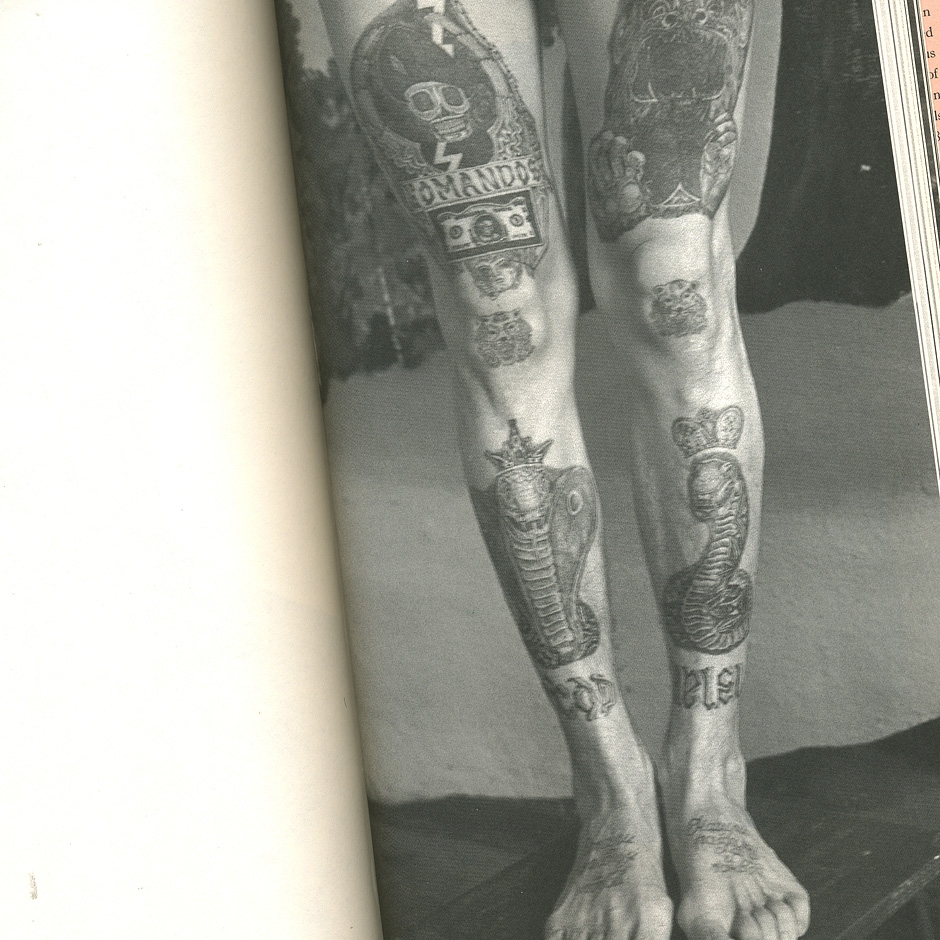
Understanding Russian Tattoo Meanings
Russia’s tattoo culture dates back centuries. Before Christianity came to Russia, Slavs wore tattoos for ritualistic and spiritual purposes. They believed tattoos held protective powers and symbolized one’s life path. When Russia converted to Christianity, tattoos were banned as pagan symbols. But the tradition lived on, especially among sailors, criminals and prisoners.
Here are some of the most common Russian tattoo designs and their meanings:
Crosses Russian Tattoo
Tattoos have been used to express various meanings and beliefs in different cultures around the world. In Russia, tattoos serve as a form of self-expression, and they are deeply rooted in the country’s history and culture. Tattoos in Russia can signify faith, political dissent, or criminal affiliation, depending on their design and placement.
Orthodox Christian tattoos like crosses, praying hands, saints, or Jesus portraits are popular among Russians who practice Christianity. These tattoos represent their faith and devotion to God. The Orthodox Church has been an integral part of Russian culture for centuries, and many Russians view these tattoos as a way to honor their religious heritage.
However, during Soviet rule, these same tattoos symbolized political dissent. The communist regime saw religion as a threat to its authority, and Christians who openly displayed their faith were often persecuted. As a result, wearing religious tattoos became a way to protest against the government’s repression of religion. Many Russians wore these tattoos as a sign of defiance, and they became a symbol of resistance against the Soviet state.
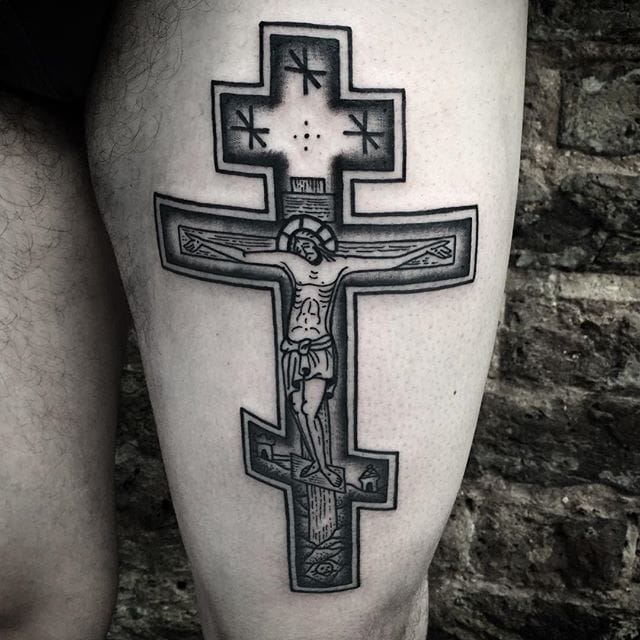
In addition to their religious or political significance, tattoos also played an important role in the Russian criminal underworld. The Thieves Code, a strict ethical code followed by members of the criminal class, included specific tattoos that indicated rank and status. A cross tattoo on the chest was one such emblem and was reserved for high-ranking members of the criminal hierarchy.
The cross tattoo represented not only rank but also a code of conduct that valued loyalty, honor, and respect. Those who had crossed tattoos were expected to uphold these principles and maintain their reputation within the criminal community. It was believed that breaking this code could result in severe consequences, including death.
In conclusion, Russian tattoos are more than just body art; they are complex symbols that reflect the wearer’s beliefs, values, and affiliations. Orthodox Christian tattoos express faith and devotion to God, political tattoos signify resistance against government oppression, and criminal tattoos indicate rank and status within the criminal underworld. These tattoos are deeply embedded in Russian culture and history and remain an important aspect of the country’s identity.
Cats Russian Tattoo
Russian prison tattoos have a rich history, and their meanings are often steeped in symbolism. These tattoos are not just mere ink on the skin but rather they carry deep cultural and traditional significance. One common symbol that you might come across in Russian prison tattoos is a cat.
In Russian prison culture, cats are highly revered as symbols of cunning, stealth, and intelligence. They are also associated with thievery, which makes them an ideal symbol for the inmates who have committed crimes such as theft. A cat tattoo, therefore, is believed to represent an experienced inmate who has been involved in many criminal activities.
The meaning behind a cat tattoo can vary depending on the number of cats depicted in the design. For instance, a single cat is said to represent the bearer’s first theft. It could be interpreted as a rite of passage – a symbolic way of marking one’s entry into the world of crime. The tattoo serves as a reminder of where they started and how far they have come.
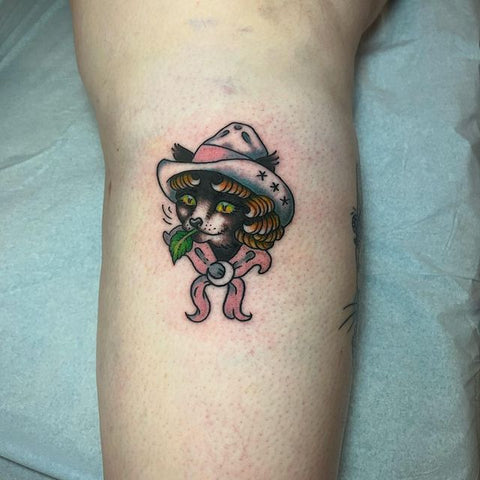
On the other hand, multiple cats signify a more seasoned criminal. Each cat represents a separate crime, suggesting that the bearer has stolen many times before. Such a tattoo might be seen as a badge of honor among prisoners, signifying the wearer’s experience and expertise in the art of thievery.
A cat clutching bars is yet another variation of the cat tattoo in Russian prisons. This particular design is believed to signify someone who has spent significant time behind bars due to repeated offenses. It could suggest that the bearer has fallen victim to the vicious cycle of reoffending and imprisonment, unable to break free from the hold that a life of crime has over them.
In conclusion, a cat tattoo in Russian prison culture carries a lot of symbolism and meaning. It speaks to the wearer’s experience, expertise, and involvement in criminal activities, specifically those related to theft. While these tattoos might seem exotic or intriguing to outsiders, it’s essential to keep in mind their cultural significance and respect the traditions they represent.
Barbed Wire Russian Tattoo
Tattoos have been a significant part of Russian culture for centuries. Each tattoo carries its unique meaning and symbolism, telling a story about the wearer’s life experiences, values, and beliefs. The barbed wire arm band tattoo is one such tattoo with a deep and dark meaning.
Traditionally, the barbed wire arm band tattoo has been associated with individuals who have served time in labor camps or prisons. It is believed that during their imprisonment, they would often see barbed wire fences, which left a lasting impression on them. As a result, they would get a barbed wire tattoo as a permanent reminder of their time spent behind bars.
However, the barbed wire arm band tattoo can also represent something much more sinister. It can indicate that the wearer is trapped in a criminal lifestyle with no way out. A barbed wire fence symbolizes restriction, confinement, and isolation. Therefore, when inked onto someone’s arm, it can imply that the individual feels trapped within a cycle of crime, violence, and negativity, unable to break free.
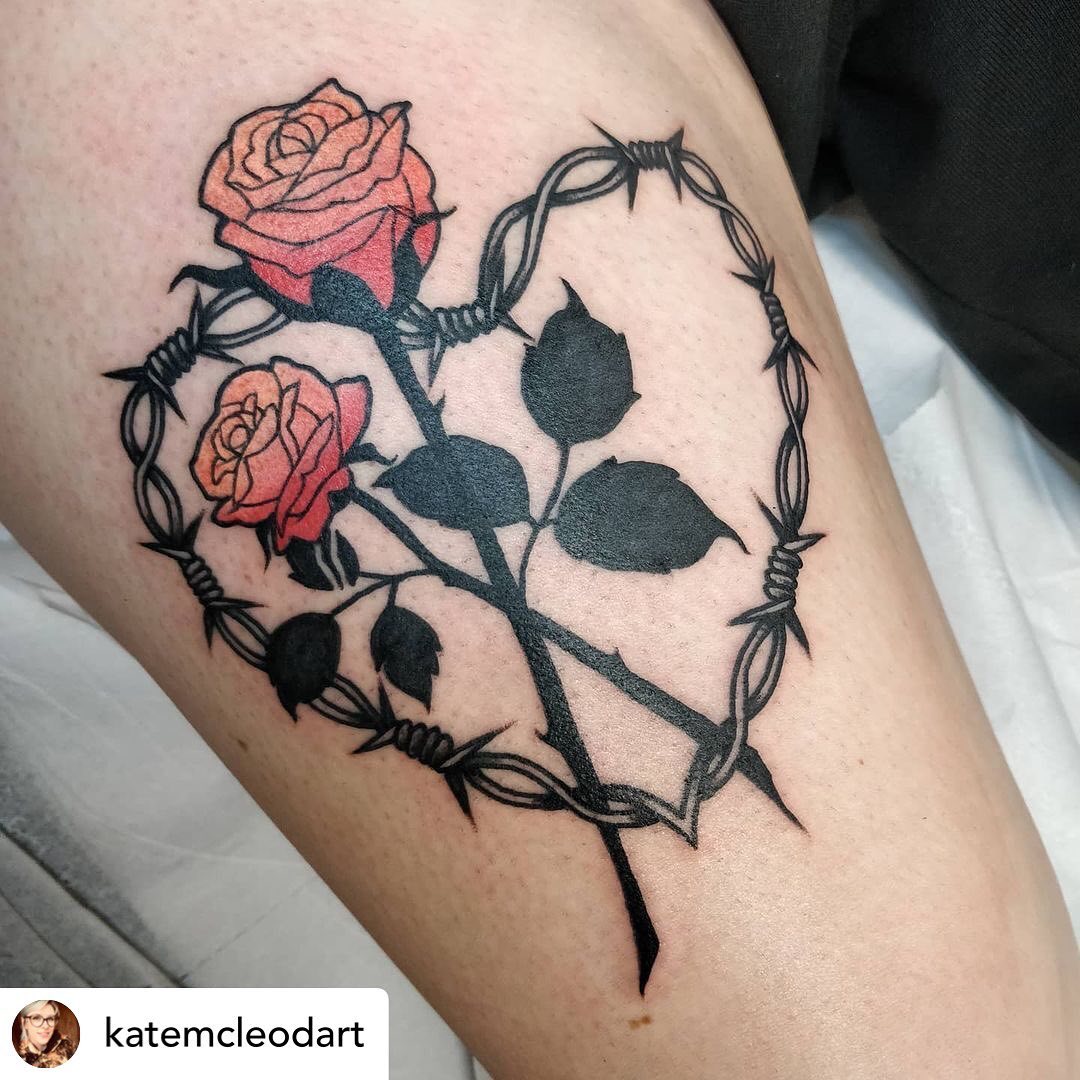
Furthermore, the barbs on the wire can represent the pain and suffering that come with living such a life. Those who wear this tattoo may have experienced trauma, abuse, or mistreatment at some point in their lives. The barbs could be an expression of their inner turmoil, reminding them of the struggles they have faced and continue to face.
The barbed wire arm band tattoo is not just limited to Russia but is prevalent worldwide, especially among those who have served time in correctional facilities. It has become a symbol of solidarity and brotherhood for inmates, representing the bond they share through their shared struggles. In fact, some inmates even use the tattoo as a way to mark their rank within the prison hierarchy.
In conclusion, the barbed wire arm band tattoo is a powerful symbol with multiple meanings. While it may signify someone’s past incarceration, it can also represent their current state of being trapped within a criminal lifestyle. It is a stark reminder of the pain and suffering that come with such a life, serving as a warning to those who may be tempted to follow in the same path.
Stars Russian Tattoo
Russian tattoo art has a rich and complex history, with various symbols and designs that hold significant meanings. One of the most commonly used motifs in Russian tattoos is the stars. The star symbol is an ancient design, which has existed for centuries and has been adopted by various cultures across the globe. However, the Russian interpretation of this design comes with its own unique significance.
In Russian tattoo culture, stars often signify leadership, status, accomplishment, and hope. They are often depicted in bold and vibrant colors, representing the wearer’s determination to achieve their goals. Stars are versatile symbols, and their meanings can vary depending on the specific context in which they are used.
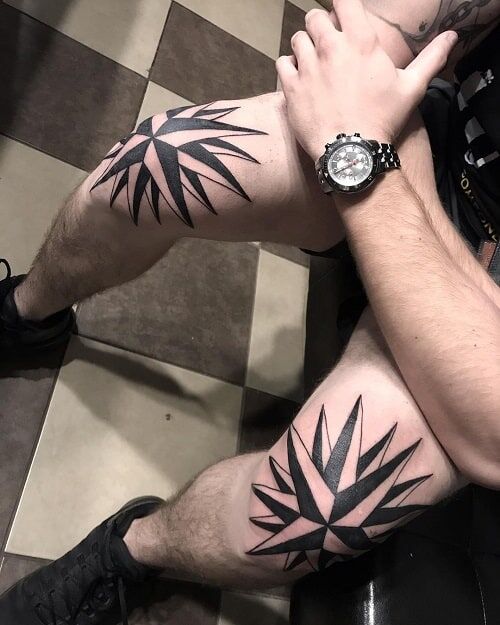
One of the most intriguing interpretations of stars in Russian tattoos is their association with The Thieves Code. In Russia, there is a long-standing tradition of organized crime, with a strict hierarchy and code of conduct. Criminals who commit serious crimes are awarded stars as a sign of their rank within the criminal world.
The location of the star on the body also holds significance. Stars on the knees or elbows are particularly meaningful, as they represent the highest level of criminal achievement. These areas of the body are particularly vulnerable, making the act of tattooing them a daring and painful act. More stars on these areas indicate a higher status within the criminal hierarchy.
Five-pointed stars, in particular, bear special significance in the world of Russian tattoos. This design represents the highest rank within the criminal underworld – Vor V Zakone, or Thief in Law. Those who earned this title were considered to have achieved the pinnacle of criminal success, possessing immense power and influence over others in their circle.
It is worth noting that while the use of stars in Russian tattoos may carry negative connotations, not all individuals who sport these designs are involved in criminal activity. Many people utilize stars in their tattoo art to symbolize personal achievements, aspirations, or to pay homage to their cultural heritage.
In conclusion, the star is a popular and versatile symbol in Russian tattoo culture. While it can be associated with criminal activity, it also carries a range of positive connotations such as leadership, accomplishment, and hope. Ultimately, the meaning behind a Russian tattoo design lies in its context and the individual who wears it.
Bears Russian Tattoo
Russian tattoos have a deep meaning and rich history, reflecting the unique cultural heritage of the country. One of the most popular tattoo designs in Russian culture is the bear. The bear is an important symbol in Russian folklore, representing strength, protection, healing powers and connection to nature.
For centuries, bears were thought to be the kings of the forest, with their size, power, and agility making them the ultimate predator. In ancient times, people admired bears for their strength and courage, and they believed that bears could help them overcome adversity and protect them from harm.
In Russian mythology, there were many stories about bears, both good and evil. Some stories portrayed bears as friendly and helpful creatures who would guide lost travelers through the forest or heal sick people. Other stories depicted bears as fierce and dangerous beasts who would attack and kill anyone who crossed their path.
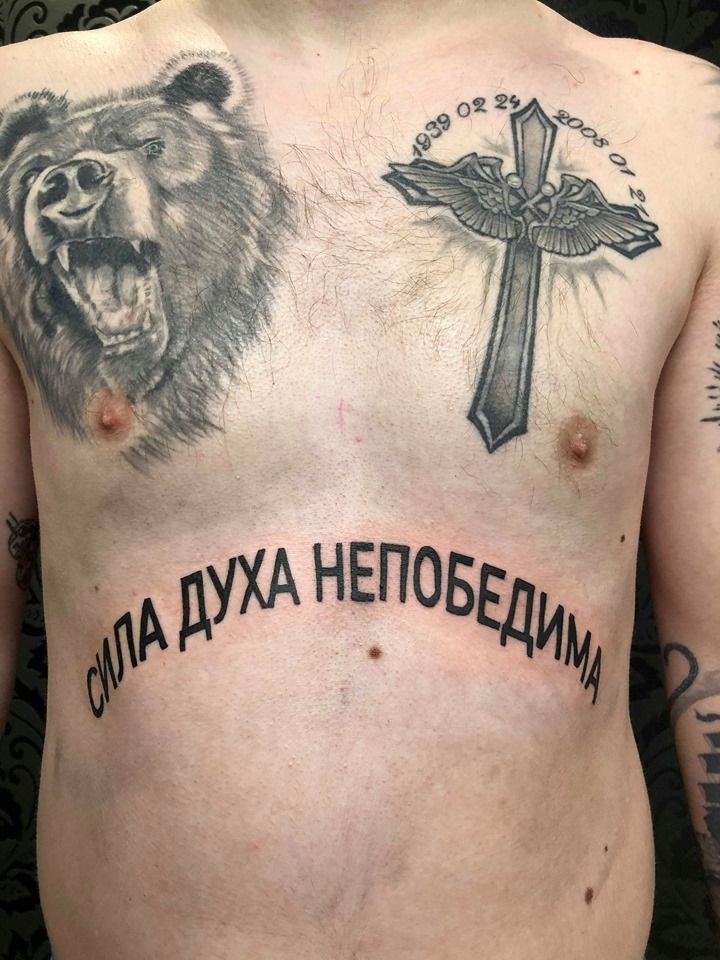
Despite their unpredictable nature, bears have always been revered in Russian culture, and their image can be found in many different forms of art and literature. In fact, the bear has become such an important part of Russian folklore that it has been proclaimed the national animal of Russia.
When it comes to tattoos, the bear is a popular choice among people who want to pay homage to their Russian roots. A bear tattoo can represent a variety of things, including strength, power, courage, and resilience.
Some people get a bear tattoo to show that they have overcome a difficult challenge or survived a traumatic experience. Others may choose a bear design as a symbol of protection, believing that it will keep them safe from harm.
Regardless of the specific meaning behind a bear tattoo, it is clear that this iconic symbol holds a special place in the hearts of many Russians. Whether it is a small design on the wrist or a large, intricate piece on the back, a bear tattoo is a powerful symbol of Russian cultural heritage and a tribute to the majestic creature that has captivated people’s imaginations for centuries.
Pig Head Russian Tattoo
The world of tattoos is vast and diverse, with each culture having its own unique meanings and symbolism. Russia is a country known for its rich culture, history, and traditions, including their tattoo culture. Russian tattoos have become increasingly popular over the years, with many people sporting them as a way to showcase their love for the country’s art, history, and culture.
One of the most controversial and offensive tattoos in Russian culture is the pig head tattoo. This tattoo has deep-seated meanings that reflect the bearer’s attitude towards the government and law enforcement agencies. In Russian culture, pigs represent law enforcement officers and their authority. The animal is often used as a symbol of corruption and abuse of power.
The pig head tattoo is believed to be a sign of hostility towards the police and government. It indicates that the bearer does not trust these institutions and believes that they are corrupt and oppressive. The tattoo serves as a form of protest against the actions of the authorities and their abuse of power.
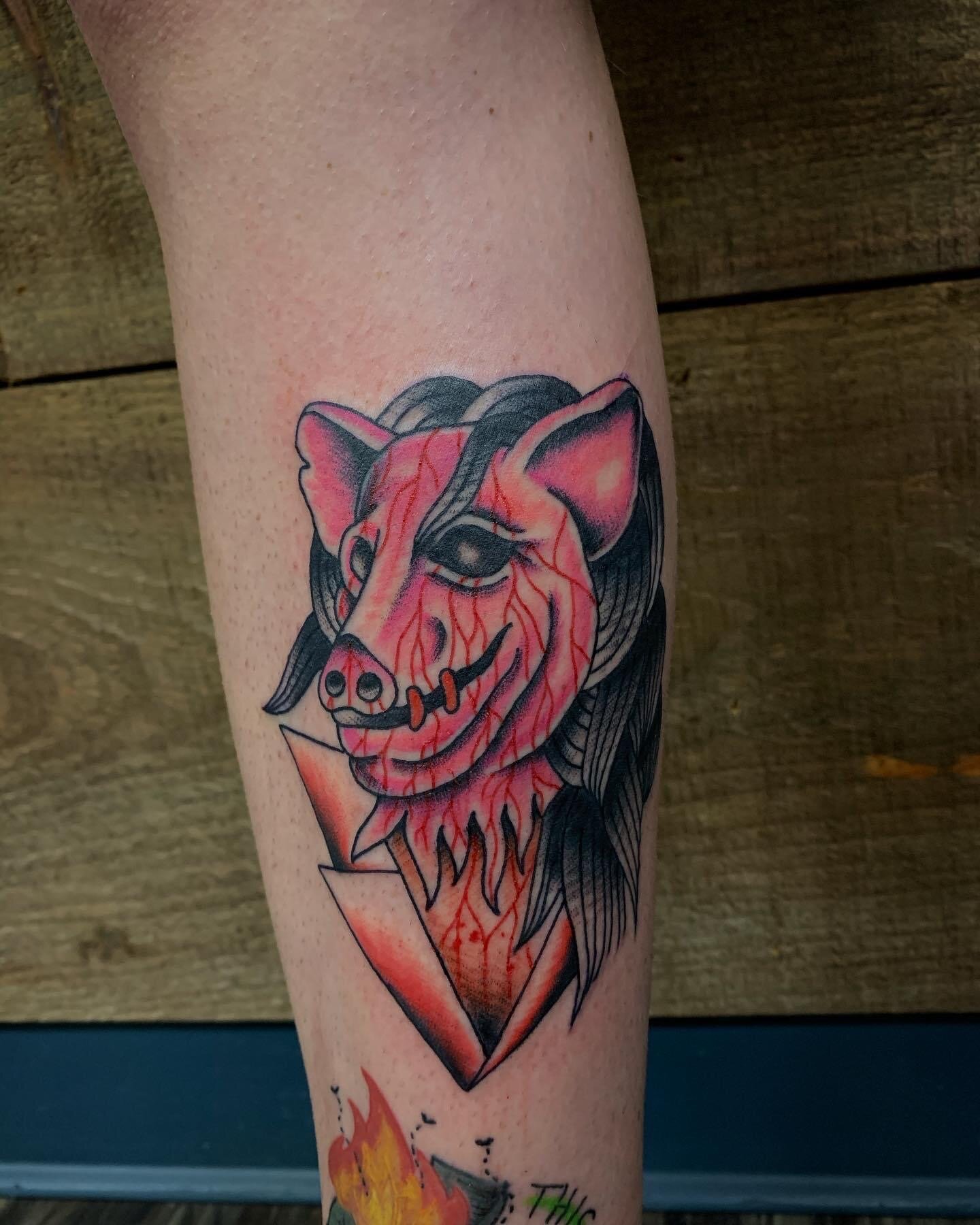
An upside-down pig head tattoo signifies contempt for the law. It is a strong statement of rebellion against the legal system and all its agents. It expresses the bearer’s desire to break free from the constraints of societal norms and expectations.
The use of pig heads in Russian tattoos is not limited to law enforcement and government criticism. Some people also choose to get pig head tattoos as a symbol of rebellion against authority in general. The tattoo represents a fierce and independent spirit that refuses to bow down to anyone or anything.
In conclusion, the pig head tattoo is one of the most powerful and controversial symbols in Russian tattoo culture. It carries deep-seated meanings that reflect the bearer’s attitude towards the government, law enforcement agencies, and authority in general. While some people may view it as derogatory and offensive, others see it as a form of protest against corruption and abuse of power. Regardless of how one perceives it, the pig head tattoo remains a popular and meaningful symbol in Russian tattoo culture.
Madonna and Baby Jesus
Russian tattoos have a long history dating back to the time of Russian Orthodox Christianity. They were initially used to symbolize religious beliefs and devotion, with depictions of saints or biblical scenes. However, over time, these tattoos have evolved to represent various meanings, including criminal associations and personal beliefs.
One of the most commonly seen Russian tattoos is the one that represents motherhood, virtue, and virginity. This tattoo usually features an image of the Virgin Mary holding her child, Jesus Christ. The image of the Virgin Mary has been revered in Russia for centuries, and this tattoo symbolizes the virtues that she embodies – purity, patience, and devotion to motherhood.
In the criminal world, however, the Russian tattoo representing motherhood, virtue, and virginity has taken on a different meaning. For thieves, it signifies their loyalty to their motherland as well as their allegiance to the criminal community. These tattoos are often earned as a mark of respect, indicating that the bearer has served their time in prison and is now a part of the thieving fraternity.
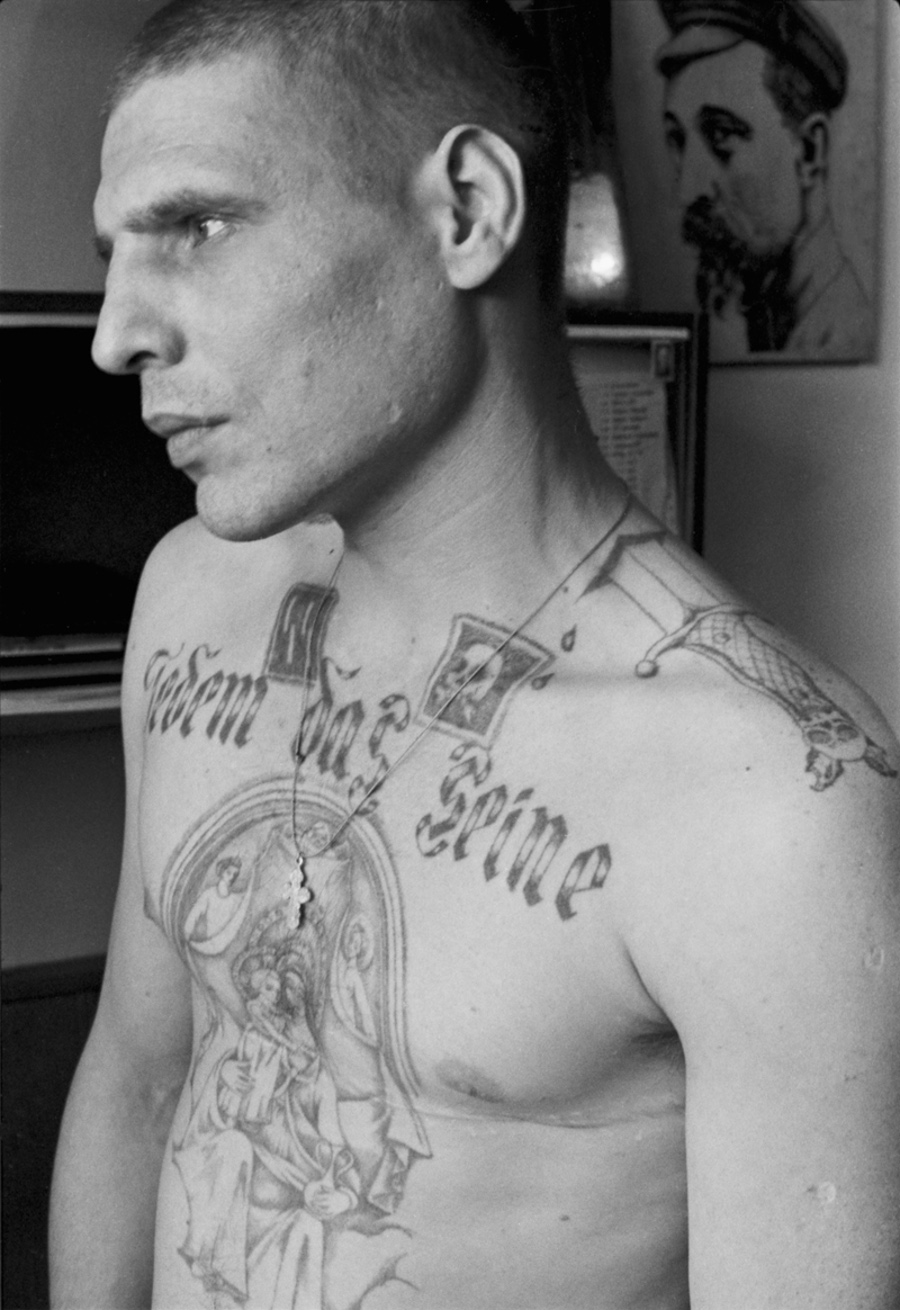
Unfortunately, there is another darker side to this particular Russian tattoo’s criminal underworld interpretation. Some people use this tattoo to indicate that they have rap*d a virgin. In a twisted way, the tattoo serves as a badge of honor, signifying the bearer’s ability to overpower and defile someone who is pure and innocent.
It is essential to remember that not all Russian tattoos carry a negative connotation. Many people still choose to get inked with traditional Russian symbols such as Matryoshka dolls or Cyrillic lettering, which hold personal significance and cultural pride.
To conclude, Russian tattoos have a rich history with both positive and negative connotations. The tattoo representing motherhood, virtue, and virginity may signify virtue and devotion to some but can also be associated with criminal activity and heinous acts by others. It is ultimately up to the individual to decide what tattoos they choose to get and what meanings they hold for them.
Churches and Monasteries
Russian tattoos have a rich and complex history, with various designs and symbols representing different meanings. One of the most prominent motifs in Russian tattoo culture is the onion domes found on many cathedrals across the country. These structures, with their distinctive shape and bright colors, are often seen as a symbol of national pride and Orthodoxy. They are also closely associated with patriotism and cultural heritage, making them a popular choice for those who wish to express their love of Russia and its traditions.
For many Russians, the onion dome is a powerful symbol of faith and spirituality. The Orthodox Church has played a central role in Russian culture for centuries, and many people feel a strong connection to its teachings and traditions. By getting a tattoo of an onion dome, they are expressing their dedication to these values and their desire to honor the country’s religious heritage.
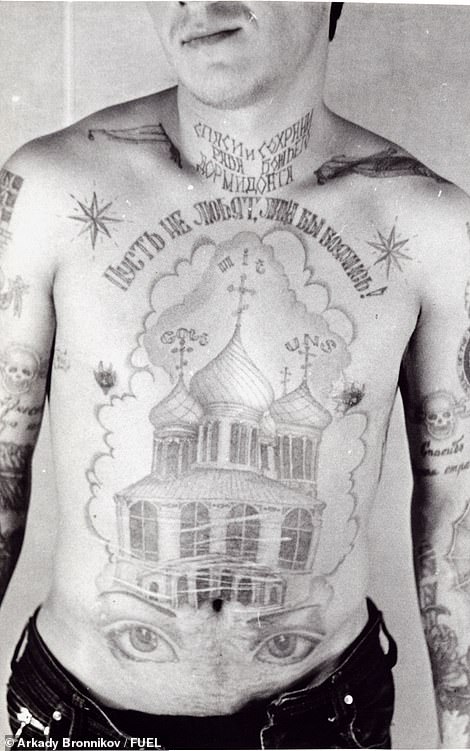
In addition to their spiritual significance, onion domes are also closely tied to Russian identity and national pride. They are a ubiquitous sight across the country, and many people associate them with the unique beauty and architecture of Russian cities and towns. By incorporating this design into their tattoos, individuals can pay homage to their homeland and show their pride in being Russian.
However, it is important to note that onion domes can carry a very different meaning when used in certain contexts. In Russian prisons, tattoos featuring onion domes are often used to indicate that the bearer is committed to serving the criminal code. This code, which is based on a strict set of rules and regulations, is enforced by inmates and is often seen as a way to maintain order and protect oneself from others.
For prisoners, getting a tattoo of an onion dome is a way to signal their allegiance to this code and to show that they are willing to fight for their place within the prison hierarchy. It is also a way to indicate that they have no intention of cooperating with authorities or following the laws of the outside world.
In conclusion, Russian tattoos featuring onion domes can carry a variety of meanings depending on the context in which they are used. For those outside of the criminal justice system, they represent national pride, Orthodoxy, and cultural heritage. But for prisoners, they signify a commitment to the criminal code and a rejection of mainstream society. Despite these differences, however, the onion dome remains one of the most recognizable and powerful symbols of Russian culture and identity.
As we’ve seen, Russian tattoos are deeply meaningful and shrouded in mystery. Their symbolism draws from history, religion, poetry and the complex underworld culture. Traditional designs have evolved yet remain a potent form of expression in Russia today.

Conclusion
Russian tattoos offer a complex pictorial language conveying concepts of identity, culture, poetry, religion, nationalism, and criminality. Their cryptic symbolism draws from many facets of Russian history and folklore. While once relegated to prisons, Russian tattoos now enjoy growing mainstream popularity. Yet their traditional designs and meanings remain preserved, resonating deeply in the cultural consciousness. For those who study Russian tattoos, a deep world of meaning awaits behind the intricate designs inked on skin.

I am Harvey Berry, a tattoo enthusiast who has immersed himself in the diverse world of ink, passionately exploring the beauty and artistry within each tattoo. My mission extends beyond uncovering the aesthetics of tattooing; it involves sharing in-depth knowledge across all aspects of this art form.
Fueled by genuine curiosity and love for every facet of tattooing, I have diligently crafted well-researched articles, with a special focus on the Tattoo Meaning of Impeccable Nest section. Here, my aim is to help the tattoo community gain a deeper understanding of the meanings and values embedded in each tattoo.
One of my primary goals is to encourage responsible decision-making when it comes to getting inked. I recognize that choosing to get a tattoo is a significant personal decision that requires careful consideration. Hence, I provide diverse resources covering the meaning of tattoos, the tattooing process, aftercare tips, and other valuable information.
Whether you are a seasoned tattoo enthusiast or embarking on your first exploration of the world of body art, I aspire to be a reliable resource for you at every step of your journey. I hope that my extensive knowledge of tattoos, especially in the Tattoo Meaning section, will assist you in finding inspiration to express yourself through the art of tattoos.
